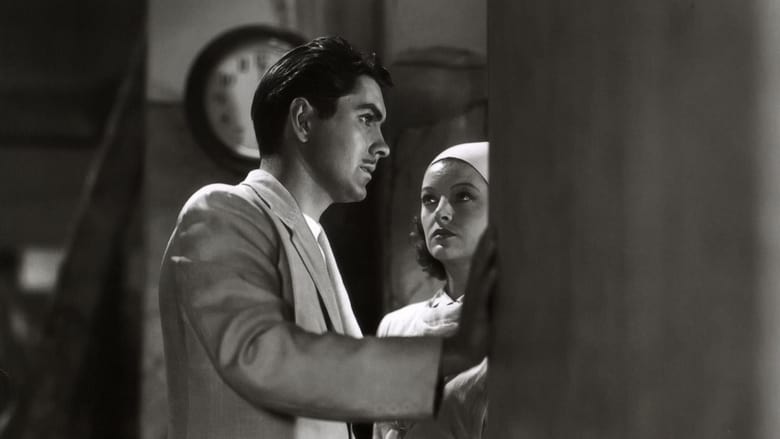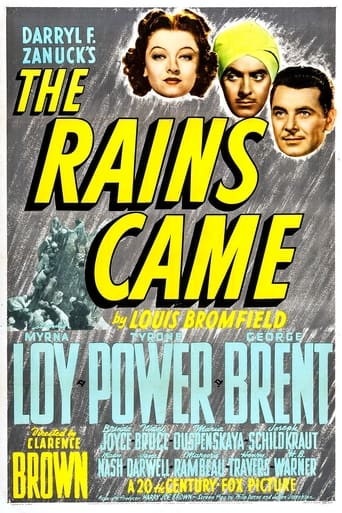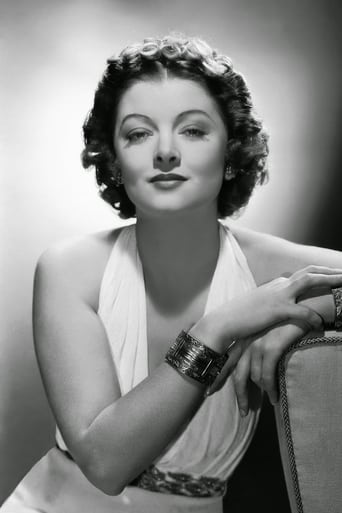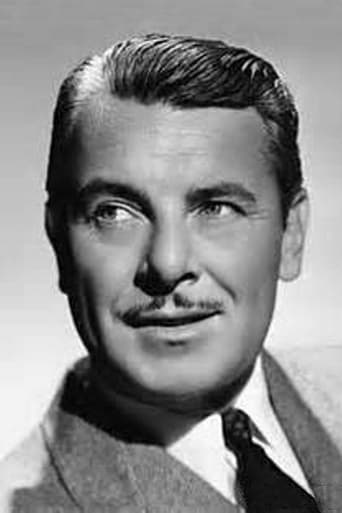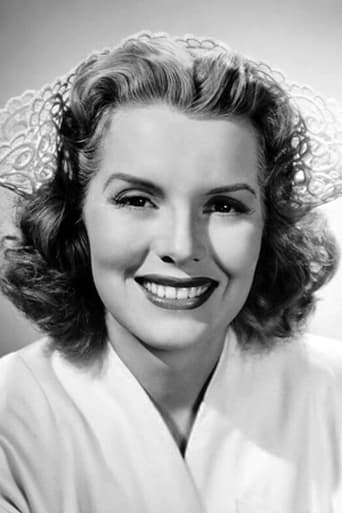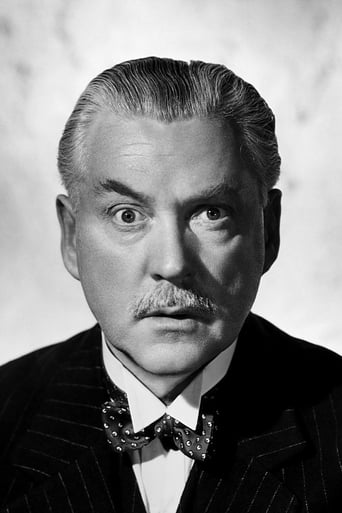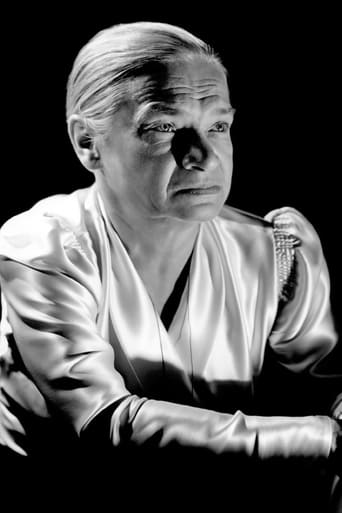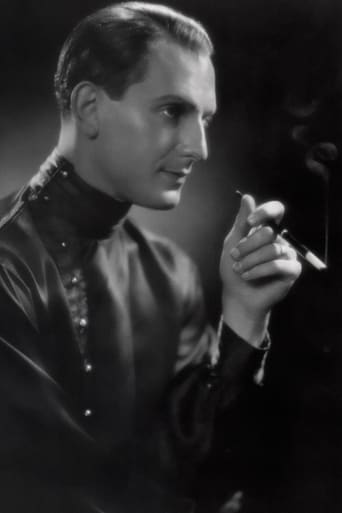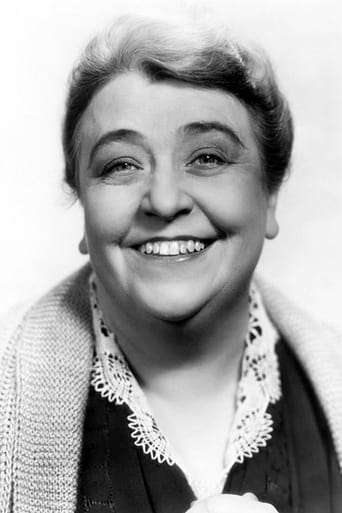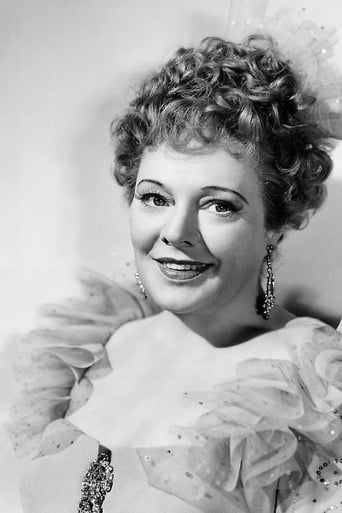Indian aristocrat Rama Safti returns from medical training in the U.S. to give his life to the poor folk of Ranchipur. Lady Edwina and her drunken artist ex-lover Tom Ransome get in the way, but everyone shapes up when faced by earthquake, flooding, and plague.
Similar titles
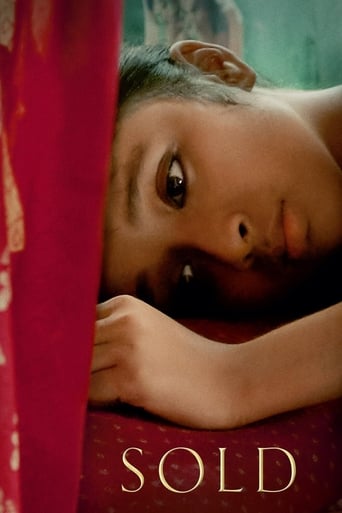
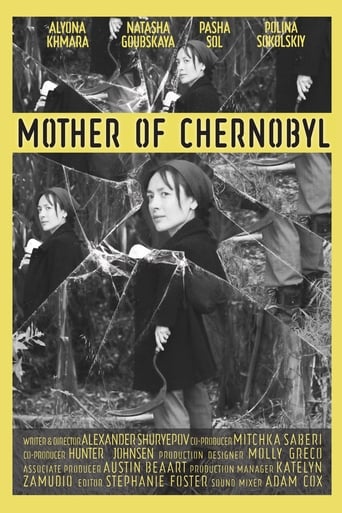
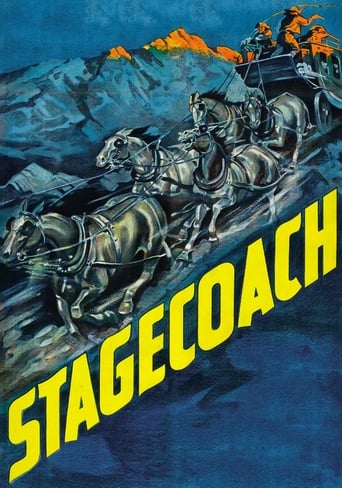
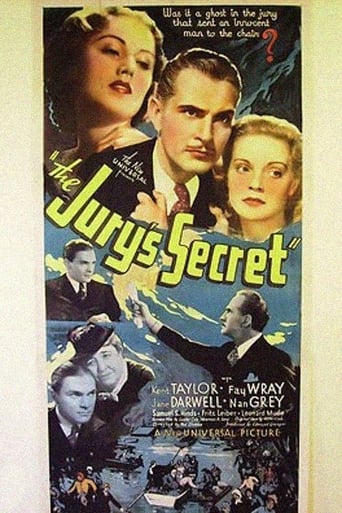

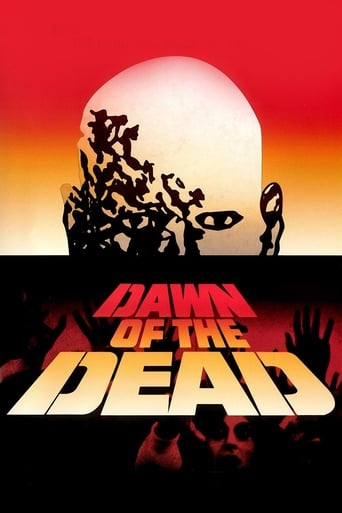
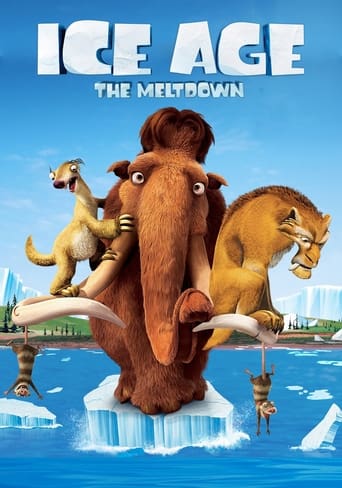
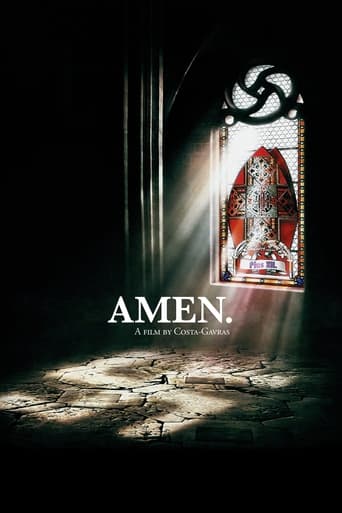
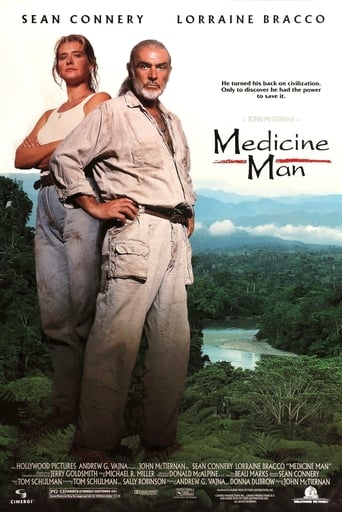
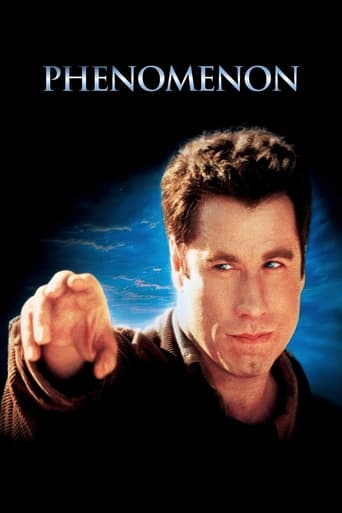
Reviews
How sad is this?
Expected more
While it is a pity that the story wasn't told with more visual finesse, this is trivial compared to our real-world problems. It takes a good movie to put that into perspective.
An old-fashioned movie made with new-fashioned finesse.
I had seen this film on TV growing up in the 60's and was as impressed with it as my mother had been. Besides a marvelous cast, superb special effects and a haunting romance, the film ably entices the viewer.Today, many years later, I find myself really loving the movie more than I ever had. Somehow I had never really seen the depth of romance between Lady Esketh (Myrna Loy) and the handsome Major Safti (Tyrone Power) she comes to love. The story of that love is subtly expressed in music at first when Rama Safti brings her attention to an Indian love song and translates it for her. The song is sublimely beautiful and affects them both deeply. After that the aristocratic Edwina Esketh who is bored with her life and in a loveless marriage begins to admire the unselfish Indian doctor who works hard for his people. In turn, the stalwart physician is attracted by Edwina, but strives to conceal his feelings, as he is continuing to pursue his work per the wishes of the Maharajah and Maharani. When disaster strikes with heavy rains and a tidal wave following, Lady Esketh wins the doctor's approval and admiration by becoming a nurse at the hospital and working tirelessly to help the patients. In addition to flooding victims, there are also many perishing of cholera.Before the final personal tragedy strikes, Dr.Safti expresses his love and admiration for Lady Esketh.Many, many lives are lost in the wake of the disaster, and the Major finds himself back on course to help the Maharani (Maria Outspenskaya) who has lost her husband in the flooding. Ironically, Lady Esketh's brutish husband (played out of character by Nigel Bruce) drowns, along with the valet he had verbally abused.One of the final messages is the timeless quality of love given unselfishly.Not to spoil it for those that have not seen this wonderful film, I will go no further except to say that it withstands the test of time.
Much of what I have to say about this film has already been said, so I will not repeat it. Here are some (I think) original thoughts.If this film were released a year before or a year after 1939 I am guessing it would have swept the Oscars. Being released the same year as "Gone With The Wind" kept that from happening. The one Oscar it won (for best special effects) was richly deserved. In fact, the effects in GWTW during the burning of Atlanta are no where near as good. Way ahead of it's time. In fact, I think the entire film was ahead of it's time by at least 20 years. The black and white cinematography made a major contribution to the overall emotional impact. Very creative use of lighting, and each frame is like a painting. It should have gotten the Oscar for that. The direction and the acting was subtle and very layered. I was especially impressed by the staging of the Myrna Loy's character's death. Most of the Hollywood death scenes at that time involve the character closing his eyes and turning his head. Very heavy handed and not very realistic. I will not spoil it for you but watch how understated it is. Occasionally the acting is over the top, but as a whole it is restrained and totally right for the material.Music is used sparingly unlike GWTW where it is wall to wall. Don't get me wrong, I love the music in that film and it is just right for it. But in The Rains Came a lighter touch is called for. And it gets it.It seemed that everyone involved in this was aware that it would be released the same year as GWTW and knew that this film had to be on a par with it. GWTW was pretty much of it's time but The Rains Came was a preview of how great films would be made in the 1950's and 1960's. The only thing that did not ring true for me was the casting of Tyrone Power as an Indian native. Even with the dark make-up he is just plain wrong. Add to that that he does not even attempt an accent! Everyone else seems just right. Newcomer Brenda Joyce is particularly good and stunningly beautiful as well.The idea of casting a love story (2 love stories really) against significant events in history was not original even in 1939, but I can think of only a few films that did it better. One of those was A Passage to India, a film that echos the style and setting of The Rains Came.I wish someone would do a remake of this. I think the material begs for it.A very unusual production for it's time and well worth a look. I could even see it as being made in say 1963. Very modern and polished.
Note the running time: 104 minutes. A richly-plotted, 600-page novel reduced to a mere 104 minutes? One fears that far too much of the novel has been condensed or even skipped entirely and alas, this fear proves to be well-grounded. Louis Bromfield's "The Rains Came" may not be great literature but it is a great "read," one of those larger than life sagas which sets a host of vibrant characters against a panoramic background of exotic richness. Hollywood, however, reduces this material to a movie which, despite its glamorous cast and handsome mounting, is barely a notch above the routine.Missing from the movie are (1) Miss Dirks and Miss Hodge, the British spinsters who run the Girls' High School (2) Fern Simon's younger sister, Hazel, (3) Maria Lishinskaya, companion to the Maharani, (4) Harry Bauer, the Swiss nurse loved by Maria Lishinskaya, (5) Harry Loder, who wants to marry Fern, (6) the annoying Miss Murgatroyd, (7) Bertha Smiley, whose role as Mr. Smiley's wife has been taken over by Aunt Phoebe, plus a host of Hindus, Muslims, and Sikhs who now, at most, are simply glimpsed in the background. Even those who are left, such as the redoubtable Mrs. Hoggert-Egburry and the social-climbing Mrs. Simon, are sometimes reduced to just a single scene. By severely reducing and simplifying the novel's impressive cast of characters, "The Rains Came" loses its "epic" quality and becomes a mere tale of two-sets of disparate lovers: Lady Edwina and the Hindu doctor, plus Tom Ransome and young Fern. Even these two romances lack resonance because so much of the characters' backgrounds has been left out. (Perhaps Fern Simon has lost the most in the transition from book to screen. Her yearning to be "Blythe Summerfield, The Pearl of the Orient," has been almost entirely ignored, and she seems curiously uncaring that her parents have apparently been killed in the flood.) Yes, the sets reflect the skill and opulence of Hollywood's Golden Age, and the special effects -- for 1939 -- are quite impressive, but the result still strikes one is being little more than a passable exercise in "escapism."Myrna Loy seems a bit miscast and while George Brent isn't a particularly good choice as Tom Ransome, he's better in the role than one might expect.
Nothing redeems the reputation of a "fallen" woman like natural disaster or illness. Just ask Greta Garbo in "The Painted Veil", Elizabeth Taylor in "Elephant Walk" or Eleanor Parker in "The Naked Jungle" and "The Seventh Sin". Audiences love to see a woman who has slid slightly off the moral track win back approval by pitching in during the aftermath of a plague or an earthquake, even if, in some cases, she doesn't make it herself! Here Loy is the unfulfilled wife of a stodgy British lord who comes to India to buy horses and runs into a former lover (Brent.) Though she dallies briefly with him, it isn't long before a handsome Indian doctor (Power) catches her eye and so she sets her sights on that prize. This doesn't sit well with the Maharani (Ouspenskaya) who has high hopes for Power as a future leader of her country. Meanwhile, an antsy, curvy, teen (Joyce) has her eye on Brent, to the quasi-dismay of her missionary parents. As the social and romantic entanglements play out, the rains of the monsoon season begin to fall. Then an earthquake rips apart an ominously placed dam and the entire area is flooded. What the water doesn't kill, a plague threatens to. The formerly selfish and self-involved survivors volunteer their aid in the hopes of redemption. This works out better for some than for others. Loy isn't always lit as beautifully here as she was at her home studio of MGM, but manages to look quite lovely during most of her scenes. She gives a knowing and well thought out portrayal. One of her evening gowns (a chiffon number with a jewel-encrusted scarf) is a real knockout. It's a bit raunchier role than she was doing during the height of her fame and she handles it nicely. She has one striking scene as she relieves a collapsing hospital attendant and her final scene is memorable, too. Power has a surprisingly small role for most of the film. Covered in "brownface", he has a puzzling Clark Gable mustache and makes no attempt at an Indian accent, though that may be a good thing. He gives a solid, but unremarkable performance, though he does look handsome, especially near the end when his hair is revealed. Brent is enjoyable in his ne'er do well role with one particularly amusing line as he's about to escort Loy to a stuffy party. Never an earth-shattering actor, he does better than usual in this film. He does become rather unintentionally funny as he swims through the storm-tossed water, though. Joyce is attractive and alluring in her film debut, though obviously a bit unseasoned. The ever-impish Ouspenskaya effortlessly steals most of the scenes she appears in. A nice dose of fine character actors including Bruce, Schildkraut, Darwell, Rambeau, Warner and especially Hope Crews help to enliven the earlier part of the film. Sadly, most of these folks are scarcely or never seen after the big event. The credits for this film are inventive and striking, even now more than half a century later. The direction is sure-handed. The music, as is nearly always the case with Alfred Newman, is solid. The real attraction, though, is the chance to see some early special effects which still hold up reasonably well. Three or four decades later, the disaster would BE the point of the movie, but in this age, the story of the characters was still the attraction and the catastrophes were either a story point or a climactic event (see "San Francisco", "Green Dolphin Street", "In Old Chicago") causing changes in the characters' lives. This was remade rather glossily and in color with Lana Turner, Richard Burton and Fred MacMurray, but the original remains the one with the edge.
Top Streaming Movies











